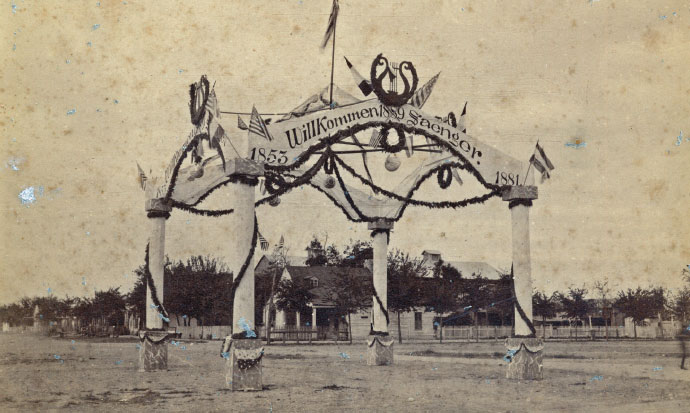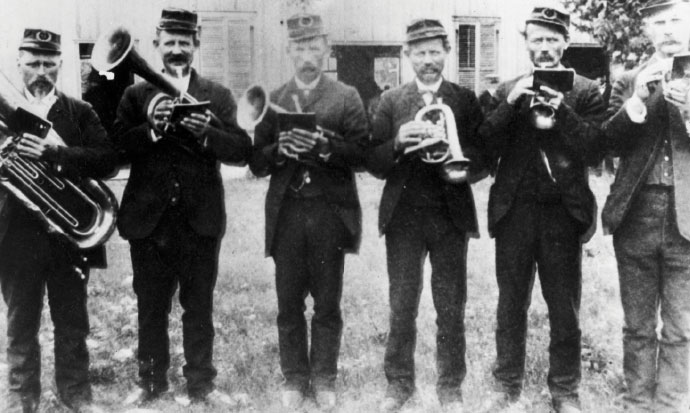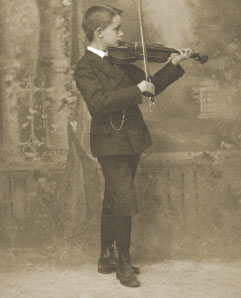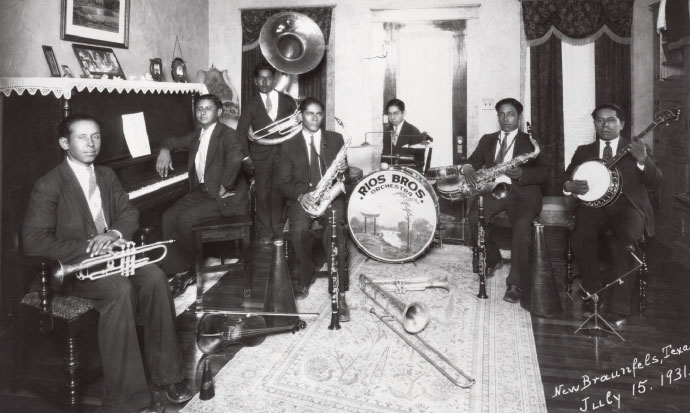Music

Saengerfest arch on the Main Plaza, 1881.
The Germans brought their love of music with them to the New World. Singing societies were a favorite leisure activity, with as many as ten formed in New Braunfels’ early years. These German singing societies became the primary promoters of serious music in Texas prior to World War I.

Volunteer firemen’s band, circa 1900.
The state’s first Saengerfest (singers festival) began in 1853. One of New Braunfels’ most popular singing societies, the Germania Gesangverein, invited similar organizations from Austin, San Antonio, and Sisterdale to a two-day singing festival held in New Braunfels on October 15-16.

Carroll Hoffman, circa 1900.
Music was a part of many activities. Bands ranged from a single fiddler playing for dances in the 1840s to full concert ensembles by the 1880s. German bands typically played high-quality instruments, and were often connected with the conductor’s teaching activities. The German band tradition continues to thrive today, as evidenced by the flurry of area events each year.
Popular German folk music and dances, including the polka and schottische, as well as the use of the accordion and other German instruments, had a widespread influence on Texas music. Later generations incorporated the German influence into their own musical styles, creating new music genres, including the Tex-Mex conjunto.

Rios Brothers Orchestra, circa 1931.
The strong musical culture of emigrating Germans boasts a long-lasting impact throughout Texas. Numerous dance halls were opened in nearly every village, and became a center of social gatherings. Some of these community centers remained throughout the 20th and 21st centuries as popular music venues for a wide range of genres, from country to blues to Tejano to rock. Gruene Hall and Anhalt Hall are prime examples in the New Braunfels area that are active and successful today.

Gruene Hall, the oldest continually running dance hall in Texas, built 1878.
